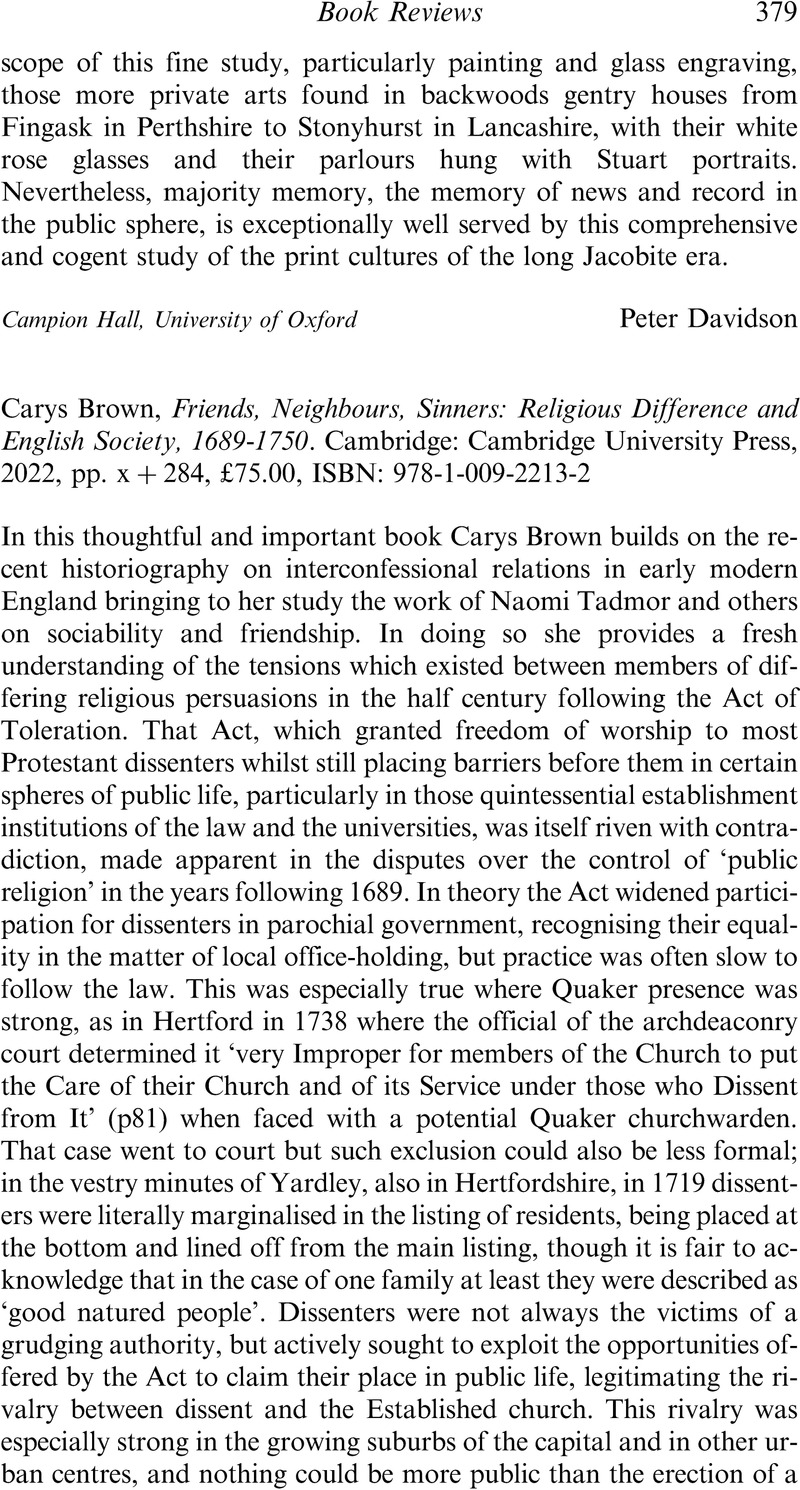No CrossRef data available.
Article contents
Carys Brown, Friends, Neighbours, Sinners: Religious Difference and English Society, 1689-1750. Cambridge: Cambridge University Press, 2022, pp. x + 284, £75.00, ISBN: 978-1-009-2213-2
Review products
Carys Brown, Friends, Neighbours, Sinners: Religious Difference and English Society, 1689-1750. Cambridge: Cambridge University Press, 2022, pp. x + 284, £75.00, ISBN: 978-1-009-2213-2
Published online by Cambridge University Press: 26 April 2023
Abstract
An abstract is not available for this content so a preview has been provided. Please use the Get access link above for information on how to access this content.

- Type
- Book Review
- Information
- Copyright
- © The Author(s), 2023. Published by Cambridge University Press on behalf of Trustees of the Catholic Record Society



